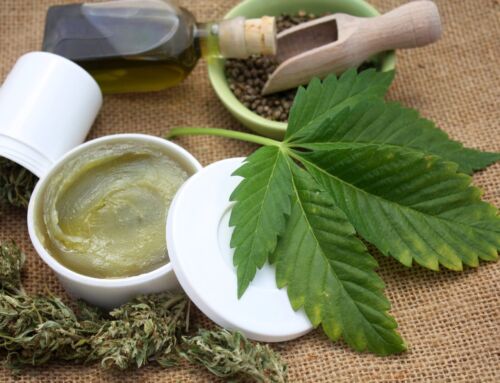In 2015, Texas lawmakers passed Senate Bill 339, known as the Compassionate Use Act. The legislation was the first to allow the legal use of low-THC cannabis products for patients suffering from intractable epilepsy.
Two years later, there was a bill to expand the program. Although it received a significant amount of bipartisan support in the House, it did not reach a full vote. Throughout the years, there have been various changes to the Act, which now allows the use of medical marijuana to treat a larger range of medical conditions.
Are you wondering how to get your medical marijuana card in the state of Texas? Read on to learn how you can access the care you need in the Lone Star State.
Understanding Medical Marijuana in Texas
While the proposed medical marijuana expansion bill failed to reach a vote in 2017, this was not the end of the road for the Texas Compassionate Use Program (CUP), which is administered by the Texas Department of Public Safety (DPS) under the Texas Health and Safety Code, Chapter 487.
In 2019, lawmakers expanded the program to include other conditions, including terminal cancer and neurodegenerative disorders, such as Alzheimer’s disease and Parkinson’s disease.
However, there was one important condition that still didn’t make the list: post-traumatic stress disorder, or PTSD.
Then, in September 2021, that changed. Lawmakers not only added PTSD to the list of conditions approved to be treated by medical cannabis. They also allowed cancer patients at any stage of the disease to access the same treatment.
Before this expansion was passed, the CUP was so limited that fewer than 6,000 Texans could make use of it. With the most recent changes, an estimated 114,000 Texans living with cancer can access the program, along with veterans suffering from PTSD.
List of Approved Conditions
To date, the CUP now applies to patients who are suffering from the following medical conditions:
- Amyotrophic lateral sclerosis
- Autism
- Cancer
- Epilepsy
- Incurable neurodegenerative disease
- Multiple sclerosis
- Post-traumatic stress disorder
- Seizure disorder
- Spasticity
Note that this list was updated to include both PTSD and all stages of cancer following the September 2021 update. You can learn more about the legalities of that expansion in this breakdown. This list also includes medical conditions that the Texas Health and Human Services Commission has authorized to receive treatment with low-THC cannabis as part of an approved research program.
How Does the Compassionate Use Program Work?
Under the CUP, qualifying physicians can prescribe low-THC cannabis for medical purposes.
This type of cannabis is low in tetrahydrocannabinol and comes from the Cannabis Sativa L plant. The Texas DPS explains that to be considered low-THC, any part of the plant can contain no more than 0.5% THC by weight. This also applies to any of the following substances related to the plant:
- Compounds
- Oils
- Resins
- Salts
- Derivatives
The DPS also explains that if a patient receives a prescription for medical marijuana, the substance is to be consumed via swallowing, not smoking, and must be limited to the amount of the prescribed dose. Note that the September 2021 update increased the total allowable amount of THC from 0.5% to 1%.
Medical Marijuana in Texas: A Unique Process
Before we dive into how the exact process works, we need to make one point clear. When it comes to medical marijuana, Texas is a unique state. Permanent residents here will not actually receive a medical marijuana card.
To make a purchase at a dispensary, you must have a prescription from a certified physician. Once you provide the required personal information and show your photo identification, the dispensary will pull up your record and provide the low-THC products that meet your dosing requirements.
Note that you aren’t required to have a physical prescription. Once your physician enters your prescription into the system, the dispensary will validate it for you.
Getting Your Medical Marijuana Card in Texas: Patient Qualification
If you want to get a medical cannabis prescription in Texas, your first step is to prove that you qualify. Under the CUP, you must show that you meet the following criteria before you can begin:
- Be a permanent resident of Texas
- Suffer from one or more of the approved qualifying conditions
- Receive a diagnosis from a CUP-registered physician
- Receive physician confirmation that the benefit of medical marijuana outweighs the risk for your condition
While there is not an age limit in place for medical marijuana in Texas, patients who are under 18 will require the assistance of a legal guardian. Note that all patients must be permanent residents of the state. This means that parents with children who live out of state are not legally permitted to bring their child across state lines to receive a medical marijuana prescription.
Getting a Prescription for Medical Marijuana
Once you have verified that you meet the criteria above, your next step is to meet with a physician who is currently registered and certified under the CUP program.
During this visit, the physician will assess your physical condition. If they determine that you are indeed suffering from one of the conditions listed under the CUP’s Qualifying Conditions List, then they may enter a prescription for medical marijuana into the Compassionate Use Registry of Texas (CURT).
Again, this is an important distinction to make: Your CURT registration acts as your medical cannabis card in Texas. You will not receive a physical card in the mail.
CURT is an online system provided under the DPS. Qualifying physicians can access and use CURT to enter new low-THC prescriptions and manage existing ones. Note that patients are not authorized to access CURT themselves. Rather, their physician will access and update it on their behalf.
When you receive your medical marijuana card and visit a dispensary, the dispensary will use the CURT system to pull up your records and learn more about your condition. They are required to confirm your prescription through CURT before they are allowed to fill it.
Your patient information will be retained in the CURT. You do not have to pay a fee to the state of Texas to pursue this program, and there are no fees associated with it.
Under Texas law, your medical marijuana prescription will be valid for one year. At that point, you will need to complete an annual visit with your physician to reassess your condition. If they deem that you need a new prescription, they will complete the process to register you in CURT again.
Physician Qualification
Physicians who wish to prescribe low-THC cannabis to Texan patients must meet all qualifications as defined in the state’s Compassionate Use Act.
The primary requirement is to provide proof of one or more board certifications in a medical specialty that is relevant to each patient’s condition. Moreover, those certifications must have been issued by a specialty board approved by one of the following entities:
- The American Board of Medical Specialties
- The Bureau of Osteopathic Specialists
The CURT system is set up to prevent more than one qualified physician from registering as an individual patient’s provider. In other words, patients cannot receive more than one low-THC prescription in an attempt to secure a surplus amount of cannabis at the dispensary.
Filling Your Prescription for Medical Marijuana
Once a qualifying physician has entered your prescription into CURT, you can contact any dispensary in the state to fill that prescription. If your child is under 18, then you can fill the prescription for them as long as you are their legal guardian.
Right now, most dispensaries are hiring their employees to deliver medical cannabis prescriptions to patients. In addition, some may be potentially filling prescriptions over the counter. If you’re unsure about the method of delivery, be sure to contact the dispensary first.
To date, the state of Texas has issued three dispensing organization licenses to three organizations. These include:
- Fluent (formerly Cansortium Texas): Licensed on September 1, 2017
- Compassionate Cultivation: Licensed on October 31, 2017
- Surterra Texas: Licensed on December 15, 2017
To access your prescription information in CURT, the dispensary will require the following information:
- Photo identification
- Your last name
- Your date of birth
- The last five digits of your Social Security Number (SSN)
If you’re picking up a prescription for a minor, then you will need to be able to provide this information upon request.
Make sure to have all of this information on hand before you visit the dispensary. This can help the process go much quicker and smoother. If for some reason, the dispensary cannot find your prescription and you are sure that it’s valid and in-date, then you should contact your physician to ensure they entered your information correctly.
Filling a Prescription From Another State
The DPS prohibits anyone from filling a medical marijuana prescription from another state within Texas borders. You are only allowed to possess low-THC cannabis obtained through a valid prescription, which is issued by a physician registered with the Texas CUP program.
Likewise, dispensaries can only provide low-THC cannabis for persons who are listed as patients in the CUP. This two-way validation ensures that only qualifying patients can access the substance and that the program is not abused.
Can I Grow Medical Cannabis in Texas?
No. The only entities allowed to grow medical cannabis are licensed dispensaries in Texas. Even then, they can only produce low-THC cannabis designated specifically for patient purposes.
If you are a qualifying patient, then you are required to purchase your low-THC cannabis products from a licensed dispensary only. To procure it anywhere else would be in direct violation of the law.
Expediting Medical Cannabis Prescriptions in Texas
Texas is unique in that you will not receive a tangible hard copy of a medical marijuana card. Once your physician reviews your medical condition and deems that it qualifies for treatment, they will enter your information into CUP, along with a prescription.
While this is a relatively straightforward process, it can be difficult and time-consuming to connect with a qualifying, board-certified physician. Thankfully, there are ways to make it more efficient.
Working With Doctors of Cannabis
When you partner with Doctors of Cannabis, you can connect instantly to a licensed Texas medical marijuana doctor. You will only pay for your visit if the doctor approves you for low-THC cannabis.
What does this mean for you? For one, it can save you a substantial amount of time. Our doctors are available and online from 8:00 a.m. to 10:00 p.m., seven days a week.
When you’re ready to connect with one, you don’t even need an appointment! Simply hop online, and complete the registration form on our website. Then, we’ll automatically connect you with a cannabis doctor online.
The best part? In Texas, the total cost of your visit is only $199. All that you need to purchase is your ID and the last five digits of your SSN.
Our process is comprehensive, so once you complete your appointment, we’ll take care of everything else to make sure that you can access the medical marijuana you need. This includes accurately and properly submitting your information and prescription into the CURT system.
Your Guide to Medical Marijuana in Texas
While you might not receive a physical medical marijuana card in Texas, that doesn’t mean you have to go without the substance you need. Now that you know a little more about how low-THC prescriptions work in this state, you’re one step closer to making those connections.
At Doctors of Cannabis, we’re here to make the process as easy as possible. When you work with our team, we’ll put you in touch with a certified physician who can complete your prescription quickly, and at an affordable price.
Choose your state to get started!






